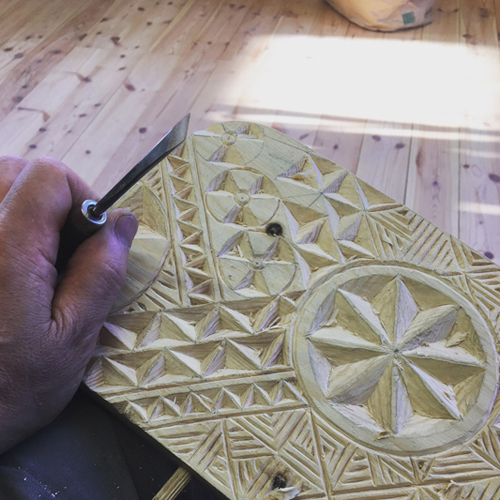Patterns of Life |
Zusammenhalten (Keeping together)
|
| |
In my artistic practice, I worked for quite some time in a narrative tradition which had its foundations in 60s political art. The whole sphere of textiles is something I encountered after completing my course of study at Konstfack in the sculpture department. Following Konstfack, I went on a longer trip to Guatemala and was captivated by the richness of indigenous people's craftwork, in particular all their textile traditions. Though in fact it wasn't textiles as such that I got into but art embedded in people's daily life. The art there was not about something more external; rather it was a tool applied to counter centuries of oppression. Art matters. A matter of participation and pride affecting everybody: it was inspirational.
When I returned to Sweden, I began investigating our own textile traditions and saw craft practice as an opportunity to get away from art that can sometimes exclude.Through work made by hand I was able to reach people with other experiences, have other types of conversation. Handwork and craft became for me a way of playing down art. Making it more accessible through a shared experience of manual work.
|
|
I could also open up issues related to art with people who were not obviously part of a contemporary art scene.
Latterly, though, I have been wondering if there was something I had in fact misunderstood about Guatemalan art practice. I went with my narrative tradition and the power of ornamentation was not something I understood in its enormity or perhaps did not dare to trust. These days I am attempting to investigate a pattern tradition that does not just deal with surface decoration but also can tell us something about the patterns of our lives, how we organize ourselves in smaller social contexts, as well as patterns in a global social structure. I think the patterns I encountered in Guatemala served as directions of travel and were an expression for a collective preservation of the Maya people's social order, hard-pressed as it was by colonialism and racism. Craft and ornamentation then become forms of resistance acting in opposition to the norms and conventions of the majority. Knowledge is carried into practice: not awareness leading to action but action leading to awareness. |

|
Research has shown that, for example, when someone has had a stroke and is suffering from paralysis, recovery can be speeded up
and get the muscle memory going through seeing somebody else doing movements the patient is not able to perform. In the same way, I think we can comprehend handwork and craft practice not just as visual experience but also as purely bodily experience that activates deep inherited memories. Where the performer and the observer share a common understanding of what being human is about.
This is where I feel that craft practice plays an important role in public art, since it is inclusive, stirs up desire to do and act and can do so through being part of collective creativity. Personal expression is present at the same time as there is something bigger than me, which has less to do with me as an individual artist but more with the |
|
experience of the hand in opening up and putting me in touch with my time, my past and future.Embedded in inherited memory and the collective experience within craft there is another movement too that puts us in touch with the very materials of which we in fact largely consist. Craft tools then form transitional objects of a kind that put me in relation to and communication with materials. This is important perhaps above all in our time as we face an ecological collapse, when material can no longer be regarded as something without an agenda of its own. Materiality affects us now in so many different ways and I think we need to approach materials with humility of a very different kind. Realizing that the boundaries between the I in me and materiality are fluid, there is nothing that essentially separates me from the wood I am working with, the threads I am twisting, the air I breathe, all of it is mutually dependent. |
|
|















